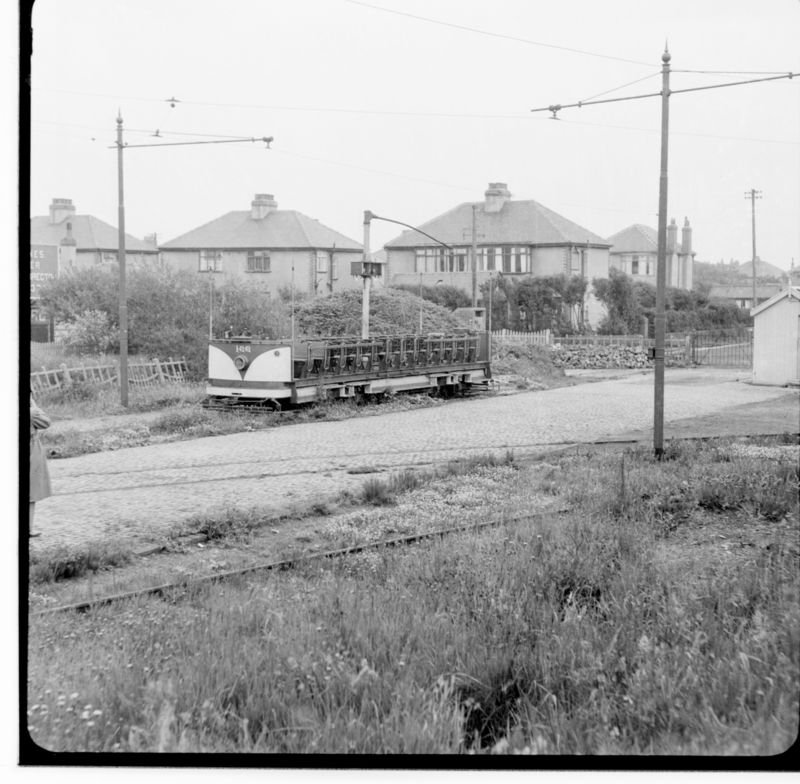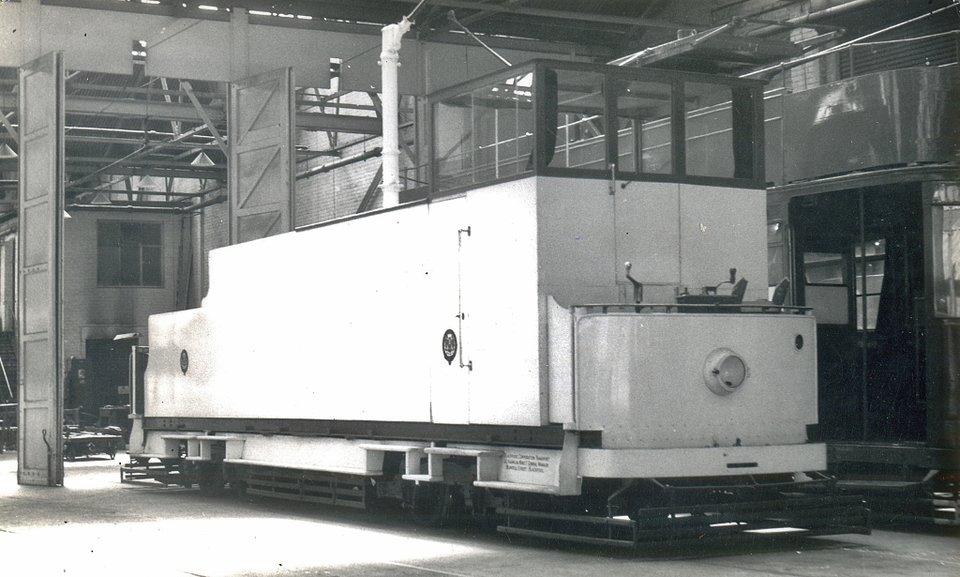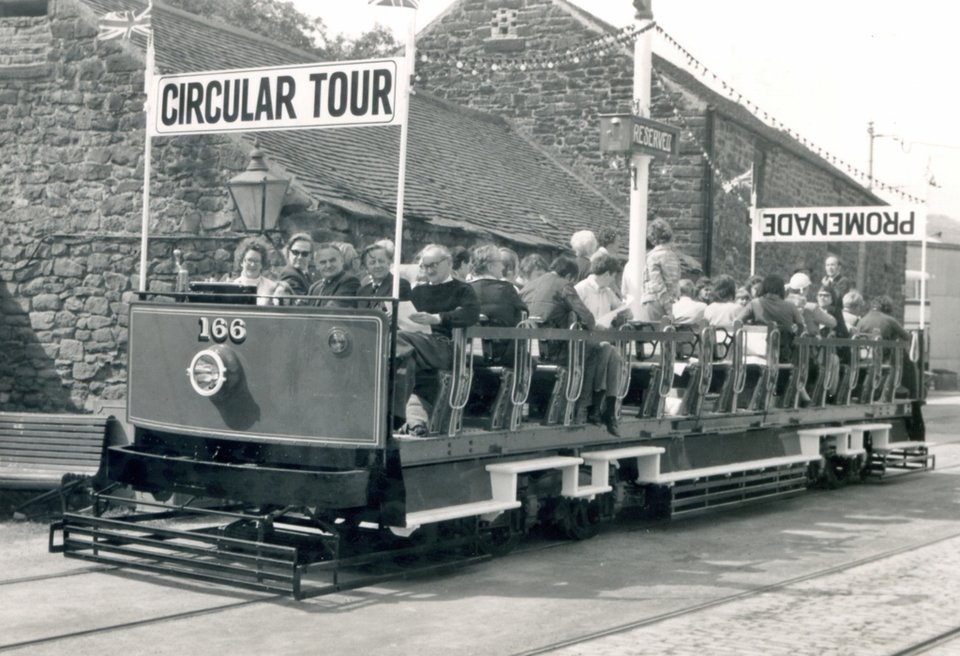Blackpool Corporation No. 166
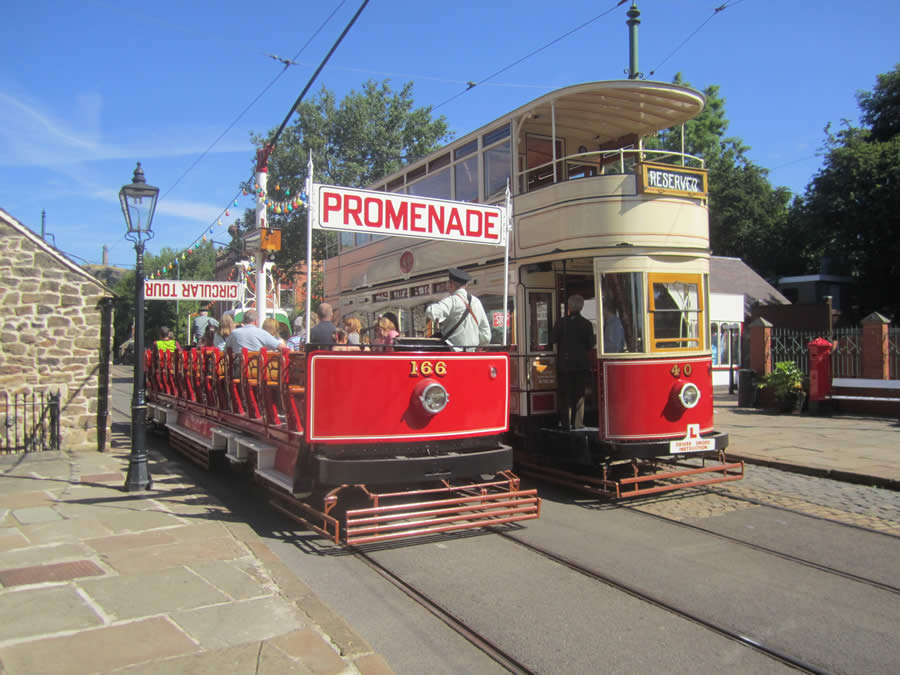
Photo: Jim Dignan
In addition to their primary function as supremely efficient conveyors of urban factory workers and others to and from their workplaces, tramways also performed an important secondary role in many seaside resorts by providing relatively cheap and effortless sight-seeing opportunities for visiting holiday-makers. This functional differentiation was also reflected in the form of the tramcars themselves, with those designed for the tourist trade being among the simplest of all public transport passenger vehicles.
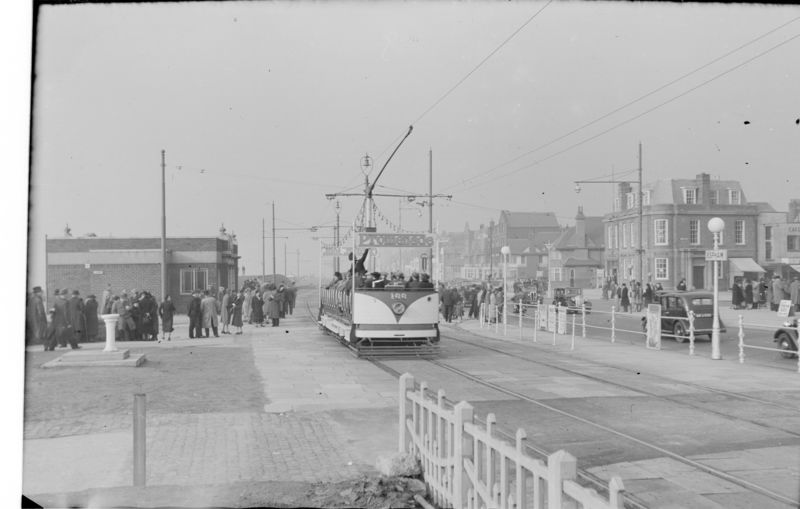
166 at Bispham. H.B. Priestley, 9/4/1939
Blackpool 166, with its traditional open air ‘toast-rack’ design illustrates this principle perfectly since it comprised little more than a motorised underframe topped by reversible wooden benches, a central trolley-mast supporting destination blinds and a dash with controllers at each end that was surmounted by a swing-over board indicating ‘PROMENADE’ or ‘CIRCULAR TOUR’. This simple moving platform afforded maximum carrying capacity on its full-width wooden cross-bench seats with minimal obstruction of the coastal scenery.
Toast-racks were the tramway equivalent of the open-topped motorised charabancs that provided many factory workers with their annual works outings and sight-seeing tours in the early part of the twentieth century. Blackpool Corporation initially invested in twenty four toast-rack trams, the first of which were delivered in 1911, and these were to prove highly popular – and profitable – during the inter-war period, an era in which domestic holidays to traditional resorts such as Blackpool were booming.
Specification
- Type of tram
- Electric single deck 'toast-rack'
- Livery
- Red and white
- Seating capacity
- 64
- Date built
- 1927
- Manufacturer of body
- Blackpool Corporation
- Manufacturer of truck
- Preston McGuire equal wheel bogies
- Gauge
- 4’ 8½”
- Motor
- GE52 2 x 27 hp
- Controller
- BTH B18
- Current collector
- Trolley
- Modification
1927 – originally numbered 160 for a few months but was then assigned the number 166 in order to make way for a new Standard tramcar no. 160.
1936 – central gangway inserted between seats, reducing capacity to 52. Two changes of livery since its introduction. Put into storage at the end of the war and then converted to a works car (number 17). Converted for use as a mobile outdoor broadcast platform between 1953 and 1965.- Withdrawn from service
Withdrawal from passenger service at the end of the war but was then used for a time as a camera car to film the illuminations.
Final withdrawal in 1965- Subsequent history
Offered to Tramway Museum Society in 1972 and arrived on 9th June.
- Restoration history
First tramcar to be fully rebuilt at Crich, 1972-4
- Current status
- Restored to original full-width seating but not the wooden foot rest bar under each seat with which it was originally equipped; operational condition. Commissioned for service as part of the operational fleet during the current season.
- Date started operating at Crich
- 1974. Has operated in 39 seasons including 2023.
- Total mileage covered at Crich
- 17,594
- Current location
- Depots
- 1927 – 1945Operational on original tramway
- 1945 – 1953In storage
- 1953 – 1965Converted into a mobile outside broadcast platform
- 1965 – 1972In storage
- 1972 – 1974Under restoration
- 1974 – 1998Operational at Crich apart from one brief interlude in 1988
- 1998 – 2004Out of commission and undergoing overhaul
- 2004 –Operational at Crich

